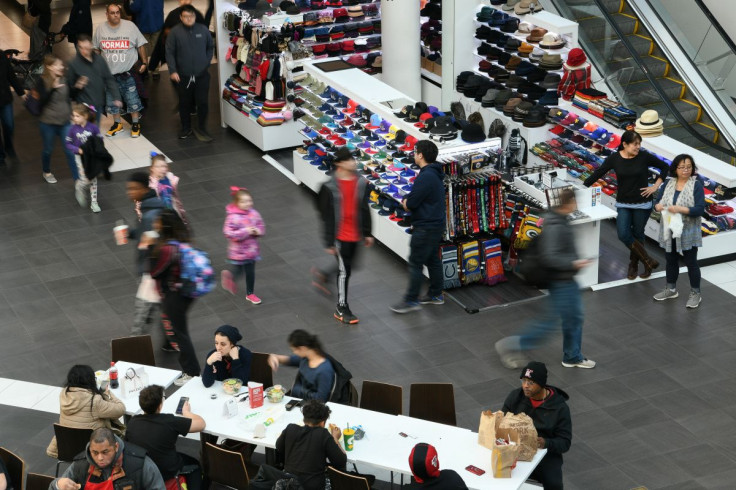Higher Gasoline Prices Flatter U.S. Retail Sales

U.S. retail sales increased solidly in March, boosted by record high gasoline prices, but consumers are starting to feel the pinch of high inflation, with online spending posting back-to-back declines for the first time in more than a year.
The report from the Commerce Department on Thursday, which also showed stronger retail sales growth in February than initially thought, suggested consumer spending picked up in the first quarter, helping to underpin the overall economy.
A tightening labor market, which is driving up wages, and massive savings accumulated during the pandemic are providing a cushion against inflation. Annual inflation surged by the most in 41 years in March, though there are signs price pressures have peaked and should start to gradually abate.
"The report still reveals the resilience of consumer spending," said Tim Quinlan, a senior economist at Wells Fargo in Charlotte, North Carolina. "There is no doubt households are feeling the pinch from skyrocketing prices across an array of products. But there are signs that pandemic-related inflation is beginning to ease."
Retail sales rose 0.5% last month. Data for February was revised higher to show sales gaining 0.8% instead of 0.3% as previously reported. Economists polled by Reuters had forecast retail sales increasing 0.6%, with estimates ranging from as low as a 0.3% decline to as high as 2.2% jump.
Retail sales are mostly made up of goods and are not adjusted for inflation. Adjusting for inflation, economists estimate sales dropped 1.6% last month. Sales at service stations shot up 8.9%, accounting for the bulk of the increase in sales in March. Excluding gasoline, retail sales fell 0.3%.
Monthly consumer prices increased by the most in 16-1/2 years in March as Russia's war against Ukraine boosted the cost of U.S. gasoline to record highs. Prices at the pump on average soared to an all-time high of $4.33 per gallon in March, according to AAA. They have since retreated to an average of $4.074 per gallon.
Stocks on Wall Street were mostly lower. The dollar rose against a basket of currencies. U.S. Treasury prices fell.
Though soaring prices are reducing consumers' purchasing power, rising wages are helping to blunt some of the hit from high inflation. The unemployment rate is at a two-year low of 3.6% and there were a near record 11.3 million job openings at the end of February, making it easier for some cash-strapped Americans to take a second job or pick up extra shifts.
Consumers also accumulated more than $2 trillion in excess savings during the COVID-19 pandemic.
"Although many households have the capacity to tap into savings and credit to fuel spending, the longer that inflation remains elevated, the greater the potential drag on real consumption," said Jim Baird, chief investment officer at Plante Moran Financial Advisors in Kalamazoo, Michigan.
A separate report from the Labor Department on Thursday showed initial claims for state unemployment benefits increased 18,000 to a still-low seasonally adjusted 185,000 for the week ended April 9. Economists had forecast 171,000 applications for the latest week. Claims have dropped from a record high of 6.137 million in early April 2020.
Better job security is also allowing some consumers to take on more debt. Last month, clothing store sales rose 2.6%. There were also increases in receipts at building material, garden equipment and supplies stores. Sales at sporting goods, hobby, musical instrument and book stores rose 3.3%.
Receipts at bars and restaurants, the only services category in the retail sales report, rose 1.0%. But online store sales tumbled 6.4% after declining 3.5% in February. That was the second straight monthly drop since the last two months of 2020.
Online retail sales have declined from a peak of $100.0 billion in January to $90.350 billion in March.
Excluding automobiles, gasoline, building materials and food services, retail sales dipped 0.1% in March. Data for February was revised higher to show these so-called core retail sales declining 0.9% instead of 1.2% as previously reported.
Core retail sales correspond most closely with the consumer spending component of gross domestic product.
February's upward revision and March's modest fall prompted some economists to lift their first quarter consumer spending and GDP growth estimates.
"Today's report continues to reflect strong consumer demand in the first quarter, but we see headwinds from the oil price shock combined with tighter monetary policy lowering real consumer spending growth later this year and next," said Ellen Zentner, chief U.S. economist at Morgan Stanley in New York.
Growth forecasts for the January-March quarter ranged from as low as a 0.4% annualized rate to as high as a 2.0% pace. The economy grew at a robust 6.9% rate in the fourth quarter.
© Copyright Thomson Reuters 2024. All rights reserved.




















